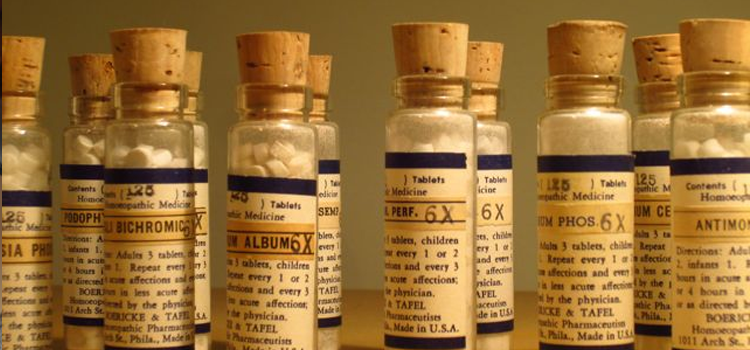
14 years later, in the year 1810, Homoeopathy came to India. Before 1852, Homoeopathy was practiced only by some amateurs in the Indian civil and military services and also by some other gentlemen in Bengal. Homoeopathic therapeutic practice came to India, when Hahnemann was alive in Paris, as known from a book published in London in 1852. It flourished in Bengal at first, and then spread all over India. In the beginning, the system was extensively practised by amateurs in the civil and military services and others. A German physician & geologist came to India with his officials for some geological investigations in the year 1810. He set up his base in Calcutta, where he distributed homoeopathic medicines free of cost for the treatment of his ailing workers and people of that locality. The Germen geologist had some knowledge about the homoeopathy and its medicines, mentioned in Fragmenta. Dr. Mullen of the London Missionary Society, known to have distributed homoeopathic medicines freely among the people of Bhowanipore of Calcutta, as at that time Bengal was famous area for homoeopathy. John Martin Honigberger has learned homoeopathy in Paris in 1835. When he had come to India, the exact date or year was not known. But he practiced homoeopathy for some years in Calcutta up to 1860. He was called famous “Cholera doctor”. He was also the physician to court of Lahore.
In 1839, Honigberger came to India for the 2nd time and took up the treatment of Maharaja Ranjit Singh of Punjab. The fakeer Azeez-oo-deen called upon Honigberger as all the native physician had failed to cure the swollen feet, paralyzed organs of speech of Maharaj. Though the Maharaja did not take any European medicine, he was resolved to take homoeopathic medicine if it is prepared in front of him. Honigberger had brought with him the tincture of Dulcamara and three empty corked phials. Dulcamara 3X was prepared and one single drop was given on a lump of sugar to take every morning and evening. A marvelous result began to start. On the third day there was great feeling of well being and the Maharaja ordered the minister to present him with 2 gold bracelets and 2 Kashmiri shawls of the same value. He was therefore the person who introduced the homoeopathy in India and a book appeared in London in the ‘Calcutta Review’ in January issue an article was published as “Homoeopathy, And Introduction into India”.
Mahendra Lal Sircar was the first Indian who became a Homoeopathic physician. A number of allopathic doctors started homeopathic practice, following Sircar’s lead. The ‘Calcutta Homeopathic Medical College’, the first homeopathic medical college was established in 1881. This institution took on a major role in popularising homoeopathy in India.
Rajendra Lal Dutta (Father of Indian Homoeopathy) was popularly known as Babu Rajen Dutta belongs to a scholar family of Bengal and for sometimes he studied in Calcutta Medical College. He was treated for a chronic disease by an amateur homoeopath in India and cured. Therefore, he developed interest in homoeopathy. Being an ardent believer of homoeopathy, he decided to practice homoeopathy by himself in 1861. Pandit Iswar Chandra Vidyasagar in 1863 was treated by Dr. R. L. Dutta for one of his chronic illness and got a marvelous result whereas he was treated by many allopathic doctors beforehand. The king of Sovabazar Rajbari, Raja Sir Radhakanta Deb Bahadur was suffering from gangrene of his feet was treated by Dr. R. L. Dutta with homoeopathic medicine.
In 1967 a bill was discussed and the Government decided to constitute a committee of 36 parliamentary members for consideration of establishment of Central Council. The Central Council of Homoeopathy Act was made in 1973 and the then Health Minister Dr. Karan Singh on behalf of Government of India constituted the Central Council of Homoeopathy (C.C.H.) in December, 1974. As soon as the Central Council was nominated, the Government abolished the Homoeopathic Advisory Committee.
The National Institute of Homoeopathy was established in December, 1975 as an autonomous organization under the Ministry of Health and Family Welfare, Govt. of India, registered under the West Bengal Society Registration Act of 1961. This institute was set up with a view to promoting the growth and development of Homoeopathy in the country by producing graduates and post graduates in Homoeopathy
In 1970, under the advice of Dr. K. G. Saxena, the then Hony. Advisor of Homoeopathy, the Central Government decided to form Central Homoeopathic Research Institute and thus Central Council for Research in Homoeopathy had been established on 30thMarch, 1978 under Society’s Registration Act XXI of 1960.
All the alternative systems of medicine were given a separate identity by creating separate department as ISM &H (The Indian Systems of Medicine and Homoeopathy) in the Ministry of Health and Family Welfare, Govt. of India in 1995 which was renamed as AYUSH (Ayurveda, Yoga & Naturopathy, Unani, Siddha and Homoeopathy), in November, 2003. Today, India is one of the important countries to lead this system of medicine in the world. CCH, NIH, CCRH & AYUSH all together is the depiction for Homoeopathic System of Medicine in India. At present there are about 195 medical colleges of homoeopathy in the country allowed by the Central Council for Homoeopathy including 38 post-graduate colleges to teach & promote Homoeopathic System of Medicine.
In India, homoeopathy is the third most popular method of medical treatment after Allopathy and Ayurveda. There are over 200,000 registered homeopathic doctors currently, with approximately 12,000 more being added every year.
BEST DOCTORS IN INDIA
MBBS, Diplomate – Surgery, Diplomate – Cardiothoracic Surgery
Chairman and Managing Director – Heart Institute
Cardiac Surgeon, Cardiologist
8 Awards 41 Years of Practice
Dr. Sanjeev Kumar Gupta
MBBS, MS – General Surgery, MCh –
Neurosurgery
Senior Consultant – Neurosurgery
Neurosurgeon- 16 Years of Experience
BEST HOMOEOPATHS OF INDIA –
- Dr. Rajan Sankaran
- Dr. Sunirmal Sarkar
- Dr. R. K. Manchanda
- Dr. V.K. Gupta
(If you require details of them, let me know)
Homoeopathy is a holistic
medicine which uses animal, vegetable and mineral preparations to cure a
person’s illness. Homoeopathy, also known as Homoeopathic medicine, is an
alternative treatment system that was developed in Germany more than 200 years
ago.
There are a lot of homoeopathic companies in the world, but a few of them
driving the market. Here we listed only top 10 leading homoeopathic medicine
companies among them.





